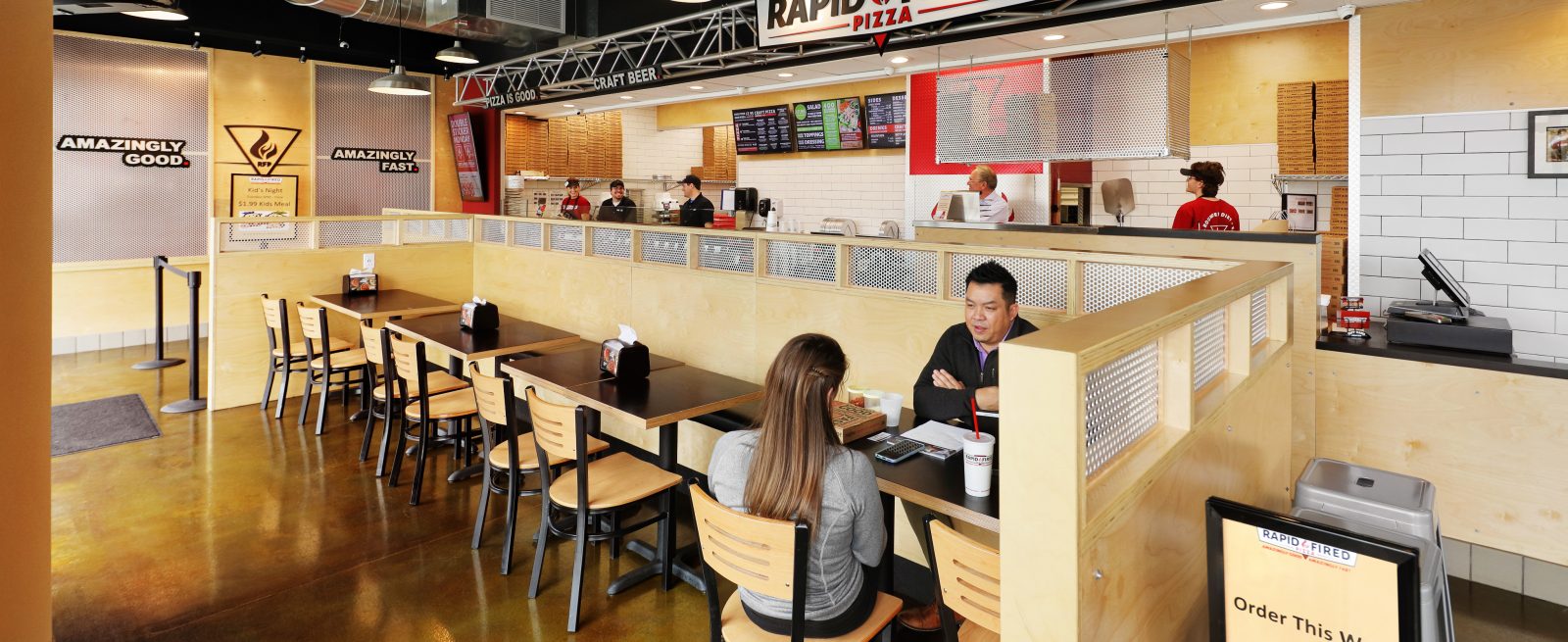Tips From an Architect on Opening a New Franchise Restaurant
5 Min Read By T. Neal Kanipe, AIA, NCARB
It’s no wonder that restaurant franchising is so popular — franchisees buy into a proven business model with built-in branding, training and production methods, and (hopefully) a solid customer base. While restaurant franchising helps bypass many of the struggles that come with developing a new business from scratch, it’s not without its own set of challenges and hidden costs.
That’s why having an experienced architect who has delivered plenty of restaurant projects is an invaluable asset in the process of opening a new restaurant franchise. Their perspective and experience will help navigate some of the hidden hurdles to set the business up for a smooth opening and long-term success.
Through my time designing numerous restaurant projects, I’ve found a few core factors that can make or break a successful franchise location.
Franchisor Support
Since each chain supports its franchisees differently, you’ll want to investigate what you, the prospective owner and franchisee, can expect from a potential franchisor before getting the gears turning on opening a restaurant.
To truly understand franchisor support, you should seek out:
The New Franchisee
Speaking with an owner who recently opened a location with the same franchise you’re looking into will give you access to fresh, firsthand knowledge about the ups, downs and pitfalls of working with the franchisor. They can also offer small tips and tricks they found through the process that could save you time, money and stress.
The Veteran Franchisee
Someone who owns multiple locations will have a deeper knowledge base built upon the experience and repetition that comes from going through the opening process several times. These veteran owners will be able to offer ideas on shortening timelines, facilitating the opening process and improving overall restaurant operations.
Most importantly, they offer a model of success to look to during the onset of the daunting task that is opening a restaurant — especially for a first timer.
Know the True Cost
There are a number of hidden costs associated with the professional services required in the process of opening a franchise location. In order to set accurate business goals and milestones, you’ll need to understand the true cost of the entire venture.
Throughout the process, there will be multiple contracts that need to be negotiated and signed, so it’s a good idea to retain legal counsel at the outset to ensure smooth sailing. A few of these contracts could include:
- Contract for the franchise
- Contract/lease for the space
- Contract with the general contractor
- Contracts/leases for equipment and services
- Contract with the architect
Make sure to account for architectural fees in your budget. An architect will help guide the process from start to finish, creating a functional space for your business. There are a number of roles they can play to protect the owner, and you should take the time to learn about the full extent of services an architect can offer.
An architect can help guide you through building selection and design, while also sorting through the inevitable code issues that arise during restaurant design and construction. They will quickly identify the immediate problems and potential concerns within a built environment that might not be apparent to the untrained eye.
Of all costs within the scope of opening a restaurant, however, construction will be the biggest expense. While not a hidden expense, construction labor and material costs can be shocking to the uninitiated. First-time owners who might reflexively compare the cost of a home renovation to a restaurant build-out are comparing apples to oranges — they are simply different worlds.
Training and soft opening are costs that can vary wildly depending on the level of training your franchise location requires. Make sure to include these costs in your budget.
The Lease: Understand What it Does and Doesn’t Say
There are a number of questions you should ask to understand your property obligations before signing a lease:
- What is the landlord providing?
- Does the lease provide an allowance to offset construction costs?
- What utilities (water, electrical, etc.) are provided to the space? Do they meet the establishment's needs?
- Is the space sprinklered? If it is not, who covers the installation cost if code requires a sprinkler system?
- Is there a grease interceptor, if one is needed?
Keep in mind building shell conditions can vary from landlord to landlord, but the three most common industry standards are the cold dark shell, warm dark shell and vanilla shell, as outlined below.
Cold Dark Shell
- No HVAC
- No lighting/electrical, with panel set in space
- Concrete slab may be fully in place or partial leave out
- No ceiling, floor finish or wall finishes (structure is exposed)
- Utilities stubbed into space
Warm Dark Shell
- HVAC installed with duct stubbed in (no distribution)
- No lighting/electrical with panel set in space
- Concrete slab may be fully in place or partial leave out
- No ceiling, floor finish or wall finishes (structure exposed)
- Utilities stubbed into space
Vanilla Shell
- HVAC installed with ducted distribution
- Restrooms installed with walls
- Ceiling installed with lighting
- Exterior walls may be finished with drywall
- No interior partitions installed
Know When Your First Rent Check Is Due
In order to understand everything that needs to happen so that your doors are open before the first rent check is due, make sure to find out what kind of grace period the lease provides. A 90-day grace period might be enough time to build out and open a restaurant, but the tighter the grace period, the more important it is to have everything in place early in the project.
Establish a Working Schedule
Throughout the many restaurant projects I’ve worked on, I’ve found that establishing a schedule to guide the process from site selection to opening day is a beneficial factor to keep the project on track.
A broad overview of the process should look like this:
- Site selection and negotiation: The process starts out with you signing the franchise agreement and negotiating the lease with your landlord. You should also find an architect during this step to help you select the right location and guide you through the rest of the build-out.
- Designing and permitting: The architect will design the space and request the appropriate permits for the restaurant.
- Select a contractor: With a design in hand, select a contractor to build out the space. After negotiating the total construction cost, get to work!
- Training and opening: The last step consists of preparing the staff for opening day and planning the franchise’s grand opening.
This schedule seems pretty simple, but there are a number of processes that can become lengthy or complicated if not properly planned for. You should spend some time talking with the players involved to identify any areas that may need extra attention.
Ask Your Franchisor
- Will they provide a floor plan layout specific to the space you choose as part of the franchise agreement? If so, what is the time frame for the floor plan delivery?
- What kitchen elements will they provide? (interior elevations, lighting layout, kitchen equipment layout, etc.)
- Do they require a final review of the design? If so, how long will it take?
Ask Your Landlord
- Are there as-built drawings of the lease space available? How accurate are they? If no as-built drawings exist, who will pay to gather this information? (tip: negotiate this as part of your landlord’s responsibility in the lease)
- Does your landlord require a review of your design? How long does that review take?
- Are there restrictions on when construction can occur (i.e. night only, no weekends)?
Ask Your Architect
- How long will it take them to complete the design?
- What is the typical time frame to get a building permit in your municipality?
Ask Your Contractor
- How long do they expect construction to take?
- When can they start the project?
- What is the construction schedule?
- What kind of things can impact this schedule? Are they aware of any complicated product lead times that need to be ordered early?
Starting a restaurant franchise can be a daunting process with plenty of moving parts to keep track of that can affect the business’s success down the road. This article provides a roadmap for you to follow, but having a qualified architect on your side is the ultimate safeguard to ensure the plan is properly executed.
Top Photo by Brian Erkens. If a franchisor doesn’t draw out a floor plan as part of the franchising agreement, a designer can create a functional and aesthetically pleasing layout.


